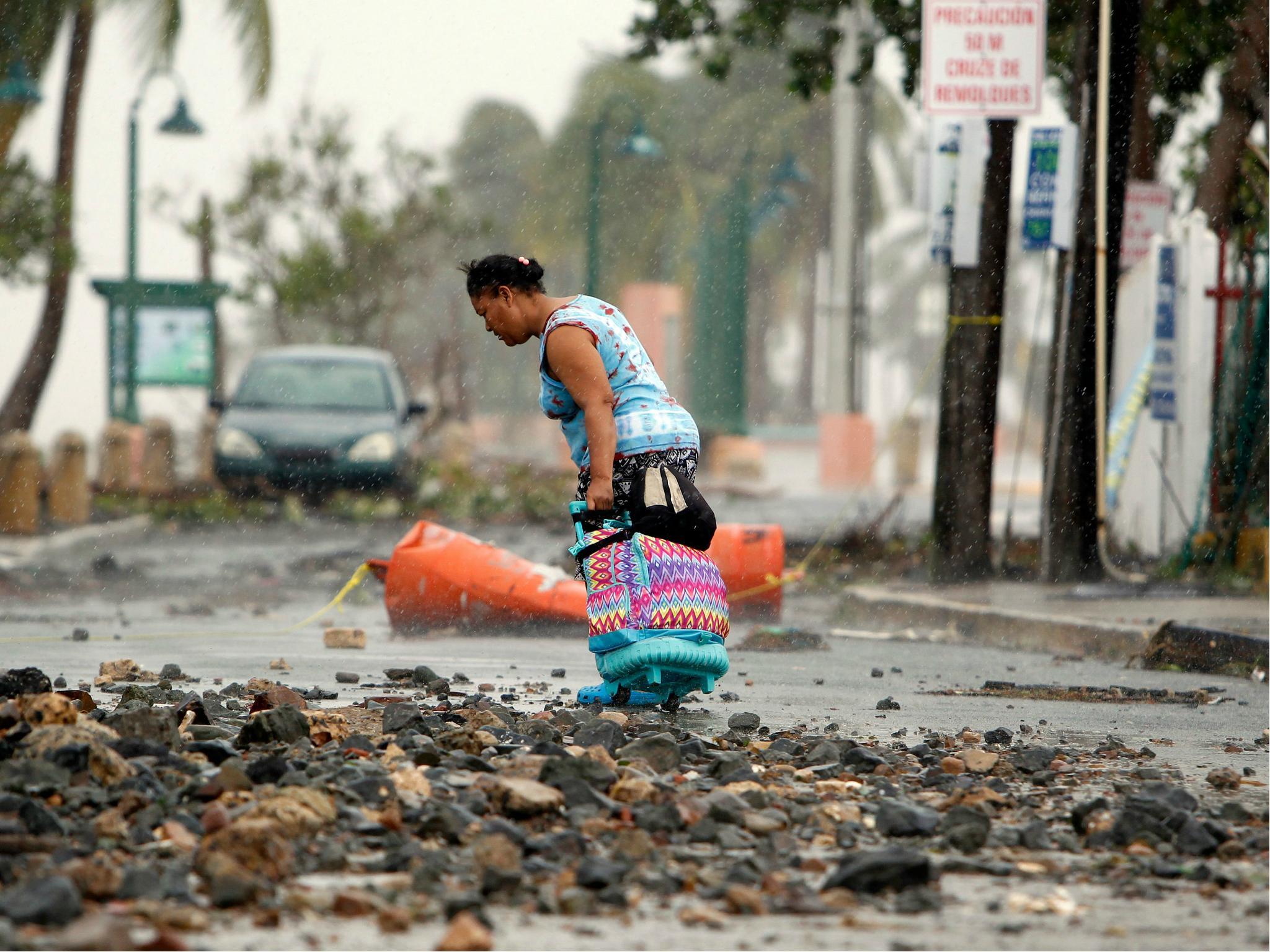I’ve seen the reality of what happens after disasters like Hurricane Irma – it’s different to what you’ve been told
Because of an over-focus on empty gestures and a queasiness about money, the response to natural disasters in the US is all too often inadequate. The army and the National Guard are on standby in South Florida – but if Hurricane Andrew taught us anything, it’s that they aren’t as much use as you’d think


Irma is battering its way towards South Florida, where it will be the first category 5 hurricane to strike the state since Hurricane Andrew in 1992.
Aid for victims of Andrew was infamously slow to arrive and chaotically distributed when it finally turned up. Federal and state authorities waiting for Irma say that they learned their lesson from mistakes made then, and that nothing like that could happen again.
I doubt that: 10 days after Andrew, I was in Homestead, a devastated town 20 miles south of Miami, where I was warmly greeted by local people who initially thought I was an insurance adjuster or a government official come to help them. They were only a little less welcoming when I explained that I was a British journalist, since their expectations of speedy government assistance were realistically low.
Where aid had arrived, it was almost comically out of keeping with local needs. US army officers were frustrated because they had erected 125 tents, each capable of sheltering 30 people whose houses were uninhabitable, but the survivors were resolutely refusing to live in them.
Instead, they were camping in the wreckage of their houses, explaining that if they moved out then their furniture and anything else they owned would be stolen by looters. The army was only allowing people to bring three suitcases each into their camp, which consequently remained entirely empty.
Another reason why people could not be shifted from the ruins of their homes was that they were waiting impatiently for the insurance adjusters to turn up, and were desperate not to miss them. On outside walls that were still standing, homeowners had painted in large letters the names of their insurance companies: All State, Prudential, Utah Fire and Flood. Their disappointment that I did not come from one of these was entirely understandable.
Not everybody hit by Andrew carried insurance: near Homestead was a camp of migrant labourers, who in better times picked limes and avocados, but had seen their plywood and hardboard shacks ripped apart by the wind. They were hoping for aid from the Federal Emergency Management Agency (Fema) whose officials were said to be in the area. I found two volunteers working for the agency sitting at a desk helping Mexican farm labourers to fill in a five-page yellow form requesting aid.
These were people in need before the storm and now their wants were even greater. They no longer had jobs picking fruit, and therefore no way to make money, which was their greatest lack. A Fema volunteer, who was normally in charge of railway safety in Washington, told me that “what we really need here is an armoured car full of money to give people.”
But cash is exactly what private charities and state agencies least wanted to dispense, though they would provide anything else – however unnecessary. The fields around Homestead were dotted with bundles of brightly coloured clothes, children's cardigans and woolly dresses, sent by donors elsewhere in the US who obviously did not know about the muggy heat of a Florida summer.
Supposedly everything has changed since Andrew: a storm so destructive that its very name was struck from the list of those used to denote hurricanes by the World Meteorological Organisation. It destroyed 63,000 buildings and, in its wake, construction regulations were made stricter so structures could better withstand hurricane-force winds.
Fema supposedly learned from its experience in 1992, though there was little sign of this when Katrina hit New Orleans in 2006 and Sandy inundated New York in 2012.
Federal and state politicians and officials are terrified of being accused of not doing enough in the face of natural calamities. They all remember that President George W Bush suffered lasting political wounds from his supposedly dismissive response to Katrina, famously caught on camera as he looked down on the flooded city through the window of his plane.
In his defence, it could be argued that the media, and perhaps the public, tends to take such symbolic gestures – or the lack of them – during disasters much too seriously, as if the presence of Bush in New Orleans would have done much good to those flooded out of their houses.
At times of natural calamity, local and central governments feel it is essential to show frantic activity, pretty much regardless of its effectiveness. Bringing in the army and the National Guard shows resolution and Florida State has 113 helicopters and 30,000 troops on standby for Irma – but it is dubious if they are the best people to deal with this type of disaster.
In the case of Andrew, a former US Marine in charge of relief told me that “they should have put the Red Cross or somebody who knew what they were doing in charge from the start, so you wouldn’t have the National Guard, city officials and the army passing the buck to each other”.
The media shares in responsibility for what goes wrong because of the way it traditionally reports hurricanes and other natural disasters. There is nothing new in this: storms and wars have been the meat and drink of the press ever since the first newspaper was published at the start of the seventeenth century, and the same is true of television and digital media today. Reporting is and has always been biased towards melodrama, and no journalist ever lost their job because they exaggerated the destructiveness of a bomb or a hurricane.
The 24/7 reporting of Irma and other hurricanes should produce a clear picture of what is happening, but in practice it is difficult to know where destruction is moderate, serious or total. The decibel level of the media is invariably high, whatever is really happening.
In Antigua, officials say that destruction on the island is light, in contrast to near obliteration on nearby Barbuda. But one supposed eyewitness on Antigua was quoted in a press report as telling ABS TV: “What we have experienced is like something you see in a horror movie. People were running from house to house and we had cars flying over our heads. We had containers – 40ft containers – flying left and right.” Perhaps this did happen somewhere in Antigua, but it was certainly not typical.
In wars and storms, it is often genuinely difficult to know the true extent of the damage: this street is wrecked, but what about the next one? Andrew struck only just outside a major media hub in Miami, but even so it took days for the media there to realise that a historic disaster had happened on their doorstep.
Hurricanes like Andrew and Irma hit the poor hardest because they live in flimsy housing that can’t withstand high winds, and because the storm is only the latest trouble to hit them.
In Haiti, the storm has disrupted water supply and waste disposal in a country that has just been through a cholera epidemic started by UN troops.
In Puerto Rico, the bankrupt electricity company is using the storm, which only brushed the island, to justify closing down electric supply for up to four months.
Disaster relief fails so often because it is geared towards immediate calamity and relieving long-term social degradation. If Irma does strike Florida with its full power, it could be just as destructive as Andrew a quarter of a century ago.

Join our commenting forum
Join thought-provoking conversations, follow other Independent readers and see their replies